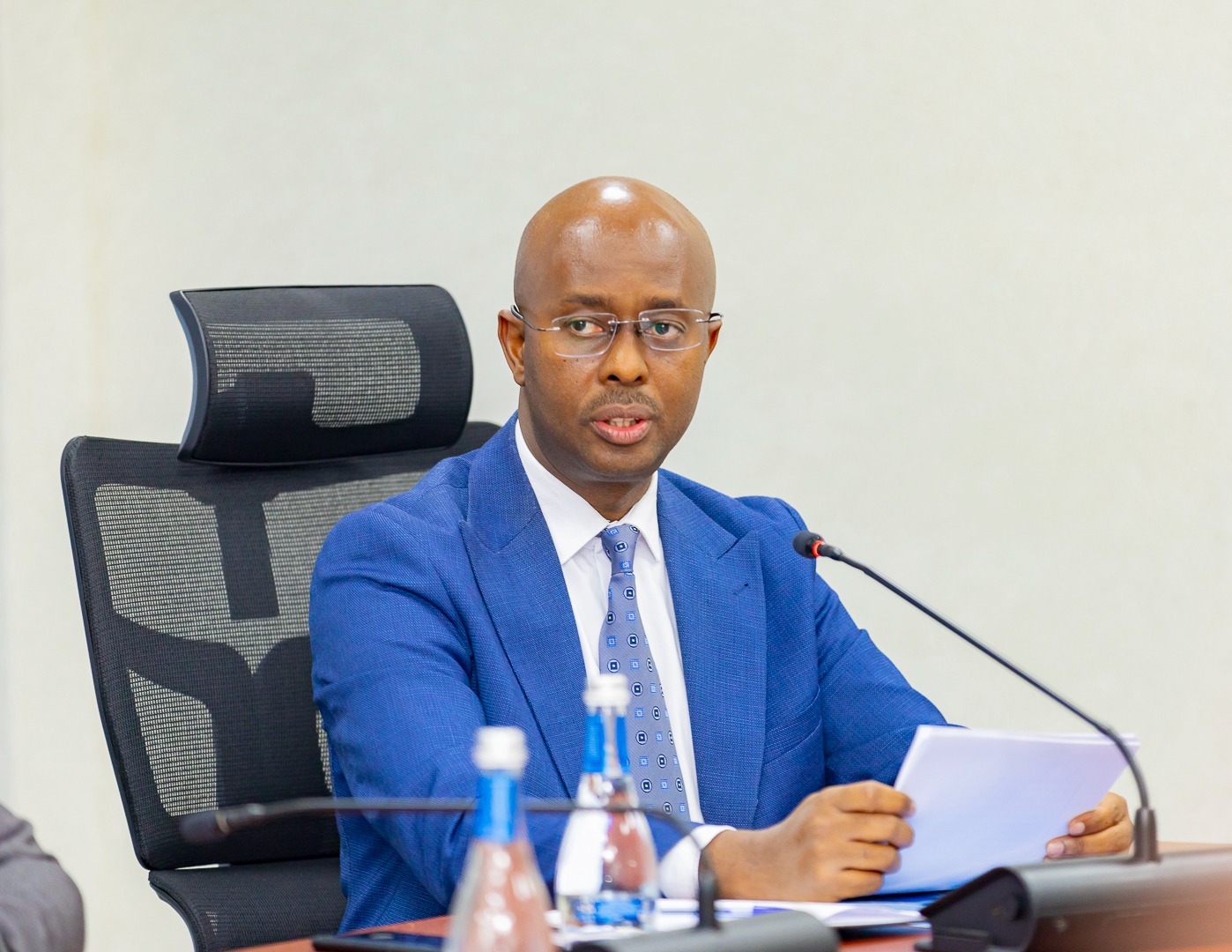
NISR Director General Yusuf Murangwa (first left row) presented GDP results before the Minister of Finance and Economic Planning, Dr. Uzziel Ndagijimana (middle), on Monday.
Rwanda’s economy grew by 9.2 percent in the first quarter of 2023 compared to the same period in 2022, according to the latest figures released by the National Institute of Statistics of Rwanda (NISR).
The growth was buoyed by the service sector which contributed 44 percent, agriculture 27 percent, industry 22 percent, while 8 percent was attributed to adjustment for taxes and subsidies on products, according to the Gross Domestic Product (GDP) figures released by NISR.
Released the GDP results on Monday, Yusuf Murangwa, Director General NISR, revealed that in the first quarter of 2023, GDP at current market prices was estimated at Rwf3, 901 billion, up from Rwf3,021 billion in the same period of 2022.
“In this quarter, the services sector contributed 44 percent of GDP, the agriculture sector contributed 27 percent of the GDP and the Industry sector contributed 22 percent of the GDP while 8 percent was attributed to adjustment for taxes and subsidies on products,” Murangwa said.
He pointed out that the growth is a sign that Rwandans are thriving in doing business and services as the growth is reflected in people’s incomes.
The report further indicates that in comparison, the first quarter estimates calculated in 2017 prices show that GDP was 9.2 percent higher when compared to the same quarter of 2022.
Agricultural activities increased by 1 percent and contributed 0.2 percentage points to overall GDP growth. However, in the same sector, the production of food crops decreased by 3 percent while the production of export crops increased by 25 percent.

Yusuf Murangwa, Director General, NISR.
Industrial activities grew by 9 percent and contributed 1.7 percentage points to GDP growth. Within industry, construction activities increased by 1 percent, Mining and quarrying increased by 15 percent, while manufacturing activities increased by 16 percent.
The growth in manufacturing was boosted by 22 percent increase in food processing; 26 percent increase in manufacturing of metal products, machinery & equipment; 37 percent increase in manufacturing of chemicals rubber & plastic products.
There was an 18 percent increase in manufacturing of wood paper printing and a 7 percent increase in manufacturing of non-metallic minerals manufacturing over the past three months.
Similarly, the service sector grew by 13 percent. Within services, wholesale and retail trade increased by 17 percent while transport activities increased by 19 percent, hotel and restaurants grew by 42 percent.
He pointed out that the growth is a sign that Rwandans are thriving in doing business and offering services as the growth is reflected in people’s incomes.
“If the economy improves, we expect to see the standard of living of Rwandans improve,”
“When we see such growth, it means that people are working and making a profit in their businesses and that the purchase power of Rwandans is increasing. This explains the 17 percent growth in wholesale and retail trade,” Murangwa said.
According to NISR, in the same period, financial services increased by 12 percent, telecommunication services increased by 43 percent; professional and scientific services dropped by 6 percent.

Minister Dr. Ndgijimana said that inflation is on the decline since December last year when it peaked.
The statistics body further indicates that public administration services increased by 7 percent and education services by 13 percent. However, health services recorded negative growths of 3 percent following a high growth of 22 percent in the same quarter of 2022.
Expenditure GDP
NISR further says that in the first quarter of 2023, total final consumption expenditure increased by 10 percent, with household final consumption increasing by 14 percent while Government final consumption decreased by 7 percent.
Exports increased by 6 percent and Imports remained unchanged while Gross Capital Formation decreased by 4 percent.
The Minister of Finance and Planning, Dr Uzziel Ndagijimana, said that the numbers show a positive trajectory for the economy and that the inflation effect is reducing, which also means that prices of goods and food will decline.
“In December last year, the Consumer Price Index (CPI) showed that inflation was at 21.6 percent, the highest we have been, but by the end of May, we were at 14% and we see that inflation will continue to decrease,” Dr. Ndagijimana said, adding that it is expected that by the end of year it will have reduced by half to 7 percent.
The Russia-Ukraine conflict and the after-effects of the Covid-19 pandemic have been blamed from spiralling inflation globally, with African countries taking a major hit more than anywhere else.

